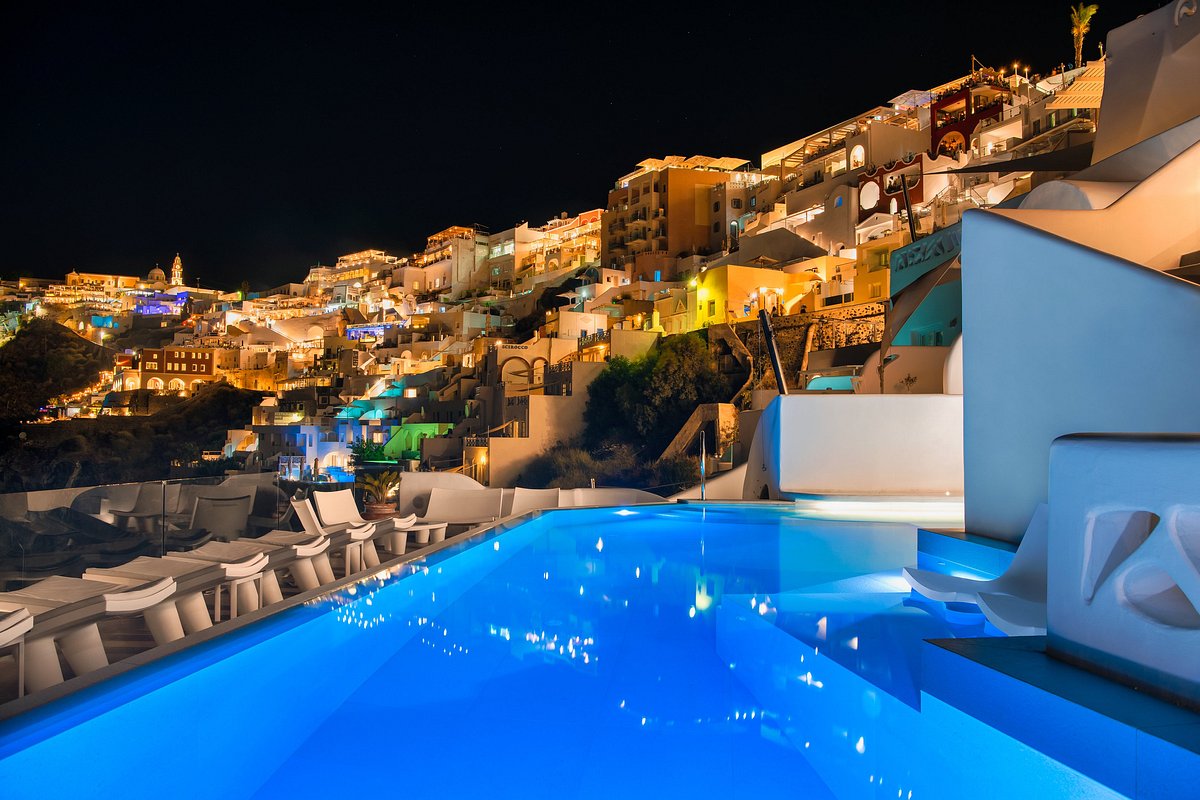Greece is known for its beautiful islands that attract millions of tourists every year. However, the question of how many Greek islands there are remains a topic of debate. Estimates vary widely, with some sources citing as few as 1,200 and others as many as 6,000 islands.
The exact number of Greek islands is difficult to determine due to the varying criteria used to define an island. Some sources only count islands that are larger than a certain size, while others include all land masses surrounded by water. Additionally, some islands are only accessible by boat and are not inhabited, further complicating the counting process. Despite these challenges, it is generally agreed that Greece has a vast number of islands, many of which are breathtakingly beautiful and steeped in history and mythology.
Geography

Location of the Greek islands
Greece is a country located in southeastern Europe, with a coastline that stretches over 13,000 km. It is home to more than 2,000 islands, of which only 168 are inhabited. The Greek islands are located in the Aegean, Ionian, and Mediterranean Seas.
Island groups
The Greek islands are traditionally grouped into several clusters. The Cyclades, located in the central part of the Aegean Sea, are a large but dense collection of islands. The Dodecanese, another loose collection, is situated in the southeastern Aegean Sea. The North Aegean islands are a group of islands off the west coast of Turkey, and the Argo-Saronic Islands are located in the Saronic Gulf near Athens.
Size of the Greek islands
The total land area of Greece is approximately 131,957 km², of which 130,647 km² is land and 1,310 km² is internal waters such as lakes and rivers. The Greek islands make up around one-fifth of the country’s total land area, which is comparable in size to England or the U.S. state of Alabama.
The largest Greek island is Crete, which has an area of approximately 8,336 km². Other notable islands include Euboea, the second-largest island, and Rhodes, the largest island in the Dodecanese group.
In conclusion, the Greek islands are an essential part of Greece’s geography, with a rich history and culture. The island groups, location, and size of the Greek islands make them a popular tourist destination for visitors from all over the world.
History

Ancient Greek islands
The Greek islands have a rich and ancient history. Many of the islands were inhabited in the Neolithic era, and the Minoan civilization on Crete was one of the earliest advanced civilizations in Europe. The ancient Greeks also colonized many of the islands, using them as trading posts and as bases for their naval fleets. Some of the most famous ancient Greek islands include Rhodes, Delos, and Samos.
Byzantine and Ottoman rule
During the Byzantine era, the Greek islands were an important part of the empire’s maritime trade network. Many of the islands were also home to monasteries and other religious institutions. In the 15th century, the Ottoman Empire began to expand into the Aegean, and many of the islands fell under Ottoman rule. The Ottomans used the islands as bases for their navy and as sources of revenue.
Modern history
After the Greek War of Independence in the early 19th century, the Greek islands became part of the newly independent Greek state. The islands were an important part of the Greek economy, with fishing, agriculture, and tourism being major industries. During World War II, the islands were occupied by Axis forces, and many suffered significant damage. In the post-war period, the islands experienced a boom in tourism, with many visitors coming to enjoy the natural beauty and rich history of the islands.
In terms of the number of Greek islands, estimates vary widely. Recent estimates place the number of Greek islands between 1,200 and 6,000, depending on what is considered an island. The number of inhabited Greek islands is much smaller, often ranging between 166 and 227. Regardless of the exact number, the Greek islands remain an important part of Greek culture and history, attracting visitors from around the world.
Culture
Greek island culture is rich and diverse, with unique traditions and customs that have been passed down through generations. Here are some of the cultural highlights of the Greek islands:
Greek Island Cuisine

Greek cuisine is famous for its fresh, simple ingredients and delicious flavours. Each island has its own unique culinary traditions, with fresh seafood, vegetables, and herbs being staples of the diet. Some of the most popular Greek island dishes include:
- Moussaka: A baked dish made with layers of eggplant, minced meat, and béchamel sauce.
- Souvlaki: Grilled skewers of meat, usually pork or chicken.
- Fava: A traditional dip made from yellow split peas, served with bread or vegetables.
- Greek salad: A refreshing mix of tomatoes, cucumbers, onions, feta cheese, and olives, dressed with olive oil and lemon juice.
Festivals and Celebrations
The Greek islands are home to a variety of festivals and celebrations throughout the year, each with their own unique traditions and customs. Some of the most popular festivals include:
- The Carnival of Patras: A colourful celebration held in February or March, featuring parades, music, and dancing.
- The Feast of the Assumption: A religious holiday celebrated on August 15th, with processions, feasting, and fireworks.
- The Festival of the Aegean: A music festival held on the island of Syros in July, featuring classical and contemporary performances.
Traditional Architecture
The Greek islands are known for their distinctive architecture, with white-washed buildings, blue domes, and narrow alleyways. Each island has its own unique style, with some of the most famous examples including:
- The windmills of Mykonos: Iconic symbols of the island, these windmills were once used to grind grain.
- The cave houses of Santorini: Built into the cliffs of the island, these traditional houses offer stunning views of the Aegean Sea.
- The Venetian fortresses of Corfu: Built by the Venetians in the 15th century, these impressive fortresses are now popular tourist attractions.
Tourism

Greece is a popular tourist destination, attracting millions of visitors each year. The country’s 6,000 islands and islets scattered in the Greek Seas are a major draw for tourists, with many of them being popular vacation spots. In this section, we will explore some of the popular Greek islands for tourists, activities on the Greek islands, and accommodation options.
Popular Greek islands for tourists
Greece has a wide range of islands for tourists to choose from, each with its unique charm and appeal. Some of the most popular Greek islands for tourists include:
- Santorini: Known for its stunning sunsets, white-washed buildings, and blue domes, Santorini is a popular destination for honeymooners and couples.
- Mykonos: Famous for its vibrant nightlife, Mykonos is a party destination that attracts young crowds from all over the world.
- Crete: The largest Greek island, Crete, has something for everyone, from beautiful beaches to ancient ruins and traditional villages.
- Rhodes: With its medieval old town, beaches, and ancient ruins, Rhodes is a popular destination for families.
Activities on the Greek islands

The Greek islands offer a wide range of activities for tourists to enjoy. Some of the popular activities include:
- Beach hopping: With over 6,000 islands and islets, Greece has no shortage of beautiful beaches to explore.
- Water sports: From snorkelling to windsurfing, the Greek islands offer a variety of water sports for adventure seekers.
- Island hopping: Many tourists choose to explore multiple islands during their visit to Greece, and island hopping is a popular way to do this.
- Cultural tours: Greece has a rich history and culture, and tourists can explore ancient ruins, museums, and traditional villages to learn more about the country’s past.
Accommodation options

Tourists visiting the Greek islands have a variety of accommodation options to choose from. Some of the popular options include:
- Hotels: From luxury resorts to budget-friendly hotels, there is no shortage of hotel options on the Greek islands.
- Villas: Many tourists opt to rent a villa for their stay, especially if they are travelling with a group or family.
- Hostels: Budget-conscious travellers can find affordable hostels on many of the Greek islands.
- Camping: For those who enjoy the outdoors, camping is a popular option on some of the less developed islands.
Overall, the Greek islands offer a unique and memorable vacation experience for tourists. With its beautiful beaches, rich history, and vibrant culture, it’s no wonder why Greece is such a popular tourist destination.
Conclusion
In conclusion, the number of Greek islands is a topic of debate, with estimates ranging from 1,200 to 6,000 islands. However, the number of inhabited Greek islands is much smaller, with estimates ranging from 166 to 227.
The Greek islands are traditionally grouped into several clusters, including the Argo-Saronic Islands, the Cyclades, the North Aegean islands, and the Dodecanese. Each cluster has its unique characteristics and attractions, making them popular destinations for tourists from around the world.
The Greek islands offer visitors a chance to explore ancient ruins, enjoy beautiful beaches, and experience the unique culture and cuisine of Greece. Whether you are looking for a relaxing getaway or an adventure-filled vacation, the Greek islands have something for everyone.
Overall, the Greek islands are a must-visit destination for anyone interested in history, culture, and natural beauty. With so many islands to choose from, it can be challenging to decide where to go. However, no matter which island you choose, you are sure to have a memorable experience.
Frequently Asked Questions
How many Greek islands are inhabited?
Out of the 6,000 islands in Greece, around 227 are inhabited. This means that there are plenty of islands to choose from if you are looking for a peaceful getaway or a lively party destination.
What are the 5 largest Greek islands?
The five largest Greek islands are Crete, Evia, Lesvos, Rhodes, and Chios. Crete is the largest island in Greece and is located in the southern part of the Aegean Sea.
What are the 12 islands of Greece?
The 12 islands of Greece are the following: Corfu, Zakynthos, Kefalonia, Lefkada, Ithaca, Paxi, Kythira, Hydra, Spetses, Poros, Aegina, and Salamis. These islands are located in the Ionian and Saronic Seas.
How many of the 6,000 Greek islands are inhabited?
Out of the 6,000 Greek islands, only around 227 are inhabited. This means that there are plenty of islands to explore and discover for those who are looking for a unique and secluded experience.
How many Greek islands are tourists?
Many of the Greek islands are popular tourist destinations due to their beautiful beaches, crystal clear waters, and rich cultural heritage. It is estimated that around 80-90 of the 227 inhabited islands receive tourists.
How many Greek islands are there exactly?
It is difficult to determine the exact number of Greek islands as it depends on the definition of an island. According to the Greek Ministry of Tourism, there are over 6,000 islands and islets in Greece. However, only around 227 of these islands are inhabited.

Born and raised on the sun-drenched island of Crete, Sofia Mavromatis is a seasoned traveler and writer with a deep-rooted love for Greece’s vibrant culture, stunning landscapes, and rich history.



